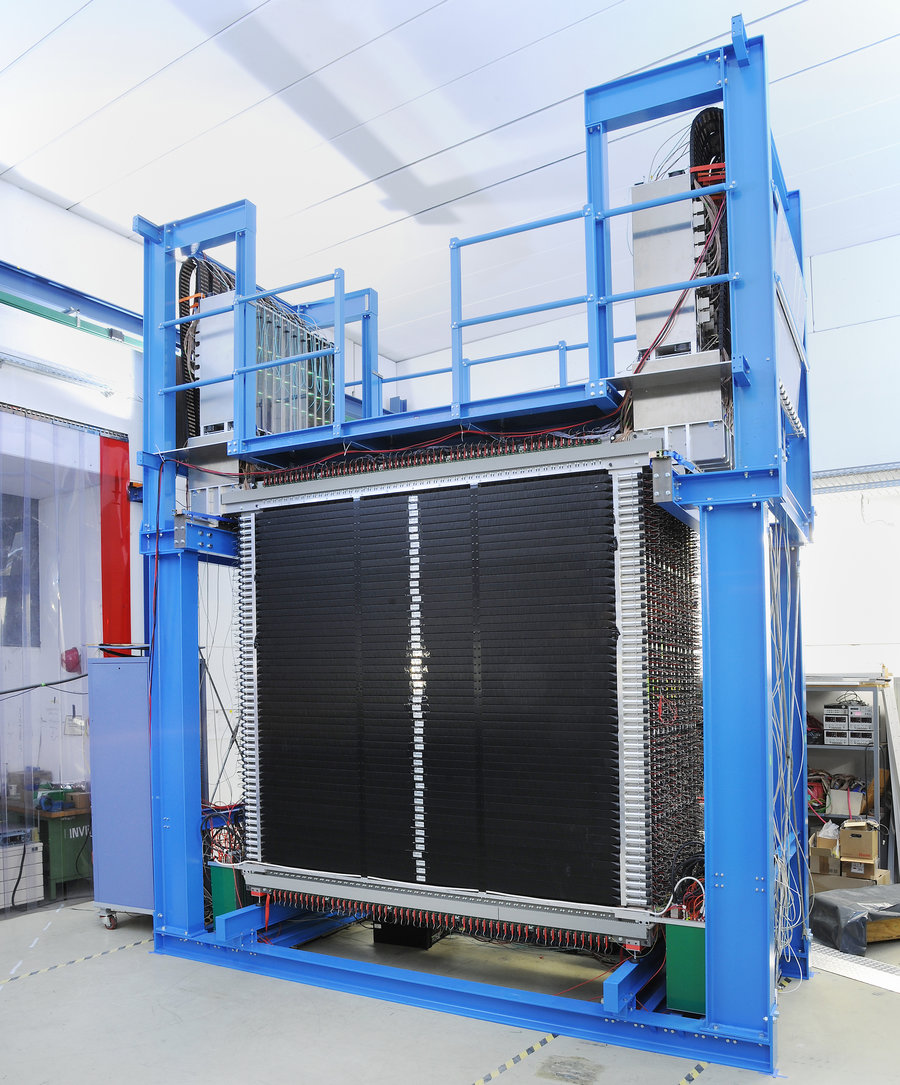Successful experiment with FAIR detector in Japan – First measurement of nucleus oxygen-28
Tuesday 17 October 2023
Researchers of the GSI Helmholtzzentrum für Schwerionenforschung and
the Technical University in Darmstadt, together with an international
team, succeeded in producing and detecting the long-sought oxygen atomic
nucleus 28O for the first time. The experiment was conducted
at the Japanese research center RIKEN. A decisive factor was the
first-time use of the meter-high neutron detector NeuLAND, which weighs
several tons and was developed for the future accelerator center FAIR
(Facility for Antiproton and Ion Research) in Darmstadt. At FAIR, it
will be an important component of one of the first experiments to go
into operation, starting in 2028. The current results are published in
the journal Nature. The experiment was conducted at the Radioactive Ion Beam Factory (RIBF) at the RIKEN research center in Japan. The 28O nuclei were produced in collisions of accelerated ions of the radioactive fluorine isotope 29F with a hydrogen target, in which a proton was shot out of the fluorine. Subsequently, the decay of the 28O into 24O
and four neutrons had to be measured. Thanks to the utilization of the
NeuLAND neutron detector setup, four neutrons could be observed in
coincidence with the charged remnant nucleus for the first time. “NeuLAND
is being developed at GSI/FAIR and built with the participation of
German university groups for the R3B experiment at the FAIR facility.
For the current experiment, we flew the detector to RIKEN in Japan and
recommissioned it on site,” explains Professor Thomas Aumann, who heads
the Research department Nuclear Reactions at GSI/FAIR and holds a
professorship for experimental nuclear physics with exotic ion beams at
TU Darmstadt. “The realization required an extraordinary effort, in
which the Darmstadt groups at GSI/FAIR and the TU Darmstadt made a
central contribution.” The most stable oxygen isotope is composed of eight protons and eight neutrons, while 28O
has eight protons and 20 neutrons. Understanding the properties of such
extremely neutron-rich nuclei is of great importance for the further
development and for tests of modern nuclear theories. These, in turn,
form the basis for predicting and understanding properties of
neutron-rich nuclei and neutron-rich nuclear matter, which play a major
role in our universe, for example in the synthesis of the heavy
elements. They are for example produced in collisions of neutron stars,
which have recently been detected by multi-messenger astronomy using the
measurement of gravitational waves.
“The result impressively
highlights the relevance and contribution of the detector setups
developed for FAIR, such as in this case the NeuLAND detector, which was
essential to conduct the experiment,” says Professor Paolo Giubellino,
Scientific Managing Director of GSI and FAIR. “Together with our
Japanese colleagues, with whom we have a long-standing successful
collaboration, and in an international team of top researchers, we were
able to achieve this outstanding result, of which all involved can be
very proud.” The participation of German universities in the
development and construction of the R3B NeuLAND detector was
substantially supported through the BMBF's collaborative research
program. The experiment was funded by the DFG through the collaborative
research center SFB 1245 “Atomic nuclei: From Fundamental Interactions
to Structure and Stars” at the TU Darmstadt. 
The NeuLand measurement setup at GSI/FAIR - Photo: G. Otto, GSI/FAIR
|